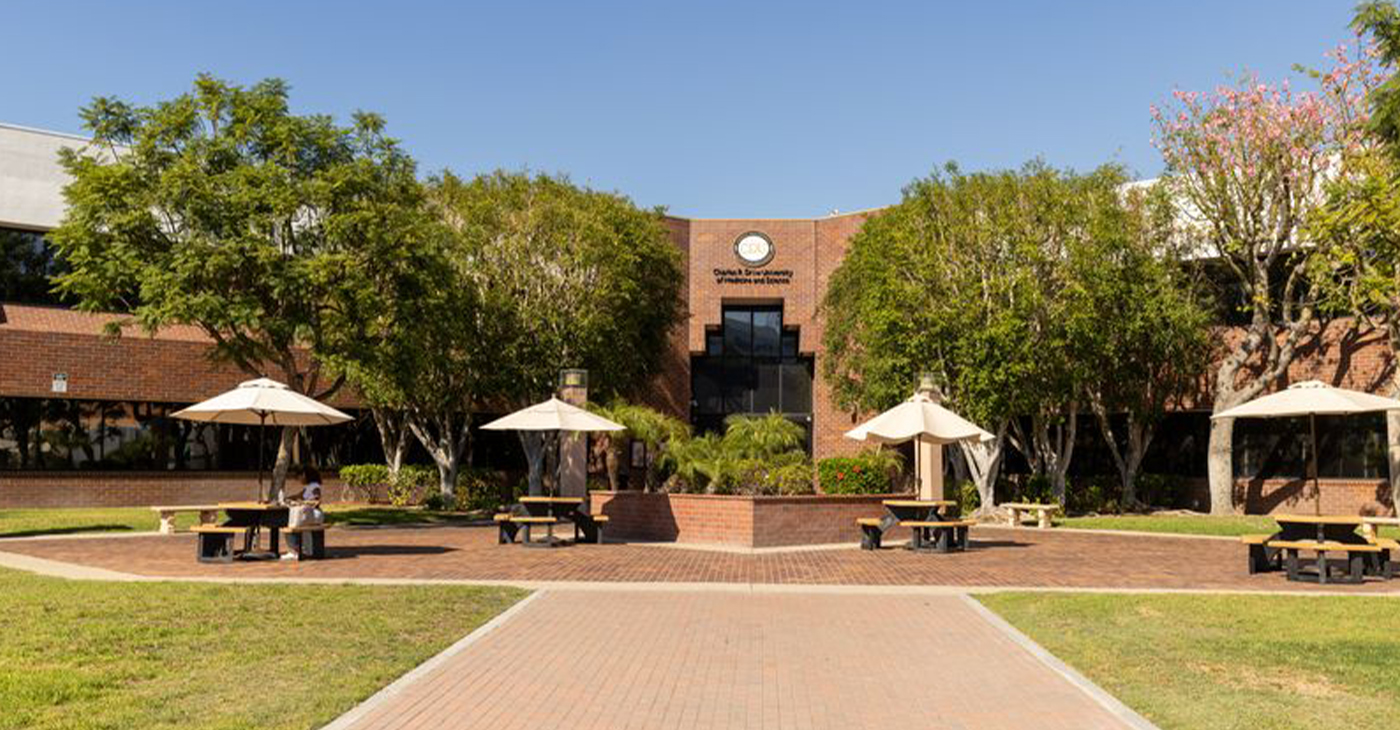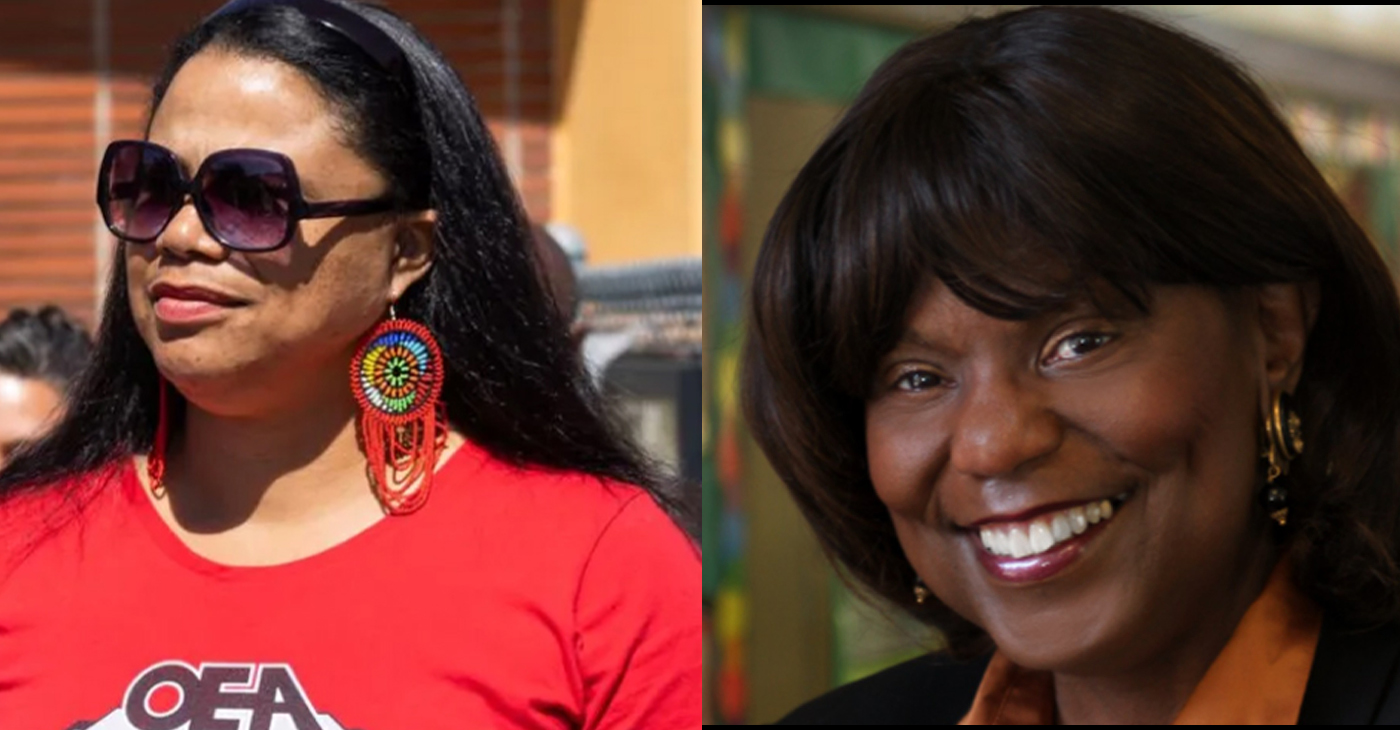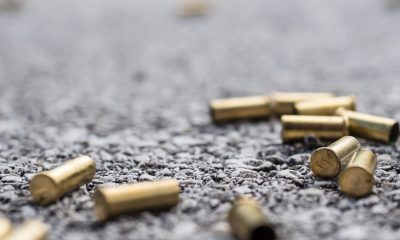Education
Sunburst Youth Academy offers youth a second chance
WAVE NEWSPAPERS — The mission of the Sunburst Youth Academy is simple — to intervene in the lives of 16- to 18-year-old youth who are at risk of not completing high school.
The mission of the Sunburst Youth Academy is simple — to intervene in the lives of 16- to 18-year-old youth who are at risk of not completing high school.
In order to do that, the program enhances life skills, education levels, employment potential and prospects for these youth, providing them the opportunity to obtain their high school diploma or return to high school.
More than an alternative high school, the academy’s signature Youth Challenge Program utilizes a military model that works to ensure that students understand they have the power within themselves to create the life they have always wanted.
“When these kids come to us, their lives have gotten a bit off track, but they know they can do better and they come here ready to do the work,” said Col. Denise Varner, program director. “They really dig deep while they are here and when they complete the program they feel such a deep sense of pride. For many, this is the first time they have ever completed anything, or the first time their mom has told them that they are proud of them. They really get to see what they are capable of. “
As part of the National Guard Youth Challenge Program, the Youth Challenge Academy is run by the California National Guard in partnership with the Orange County Department of Education. The program has a 5 1/2 month residential phase and a post-residential 12-month mentoring phase.
The one-on-one mentoring relationship provides young people with the support they need to help them continue the positive successes and direction achieved during the challenge phase. Admission is voluntary and tuition is free.
The program serves approximately 400 students per year. On average, participants advance four years in their English language skills and two years in their math skills.
While military service is not required upon completion, students who participate in the program must meet military grooming standards, wear military type uniforms, and observe standard military customs and courtesies.
“One of the things that makes our participants so successful, both during and after the program, is the structure we offer,” Col. Varner said. “We help them understand their potential and they just flourish.
“We have a very high success rate. There was this one kid who was hired by a music producer and is now making six figures, another who is a minor league baseball player and another who is a pro wrestler.
“There is one story that sticks out for me in particular,” Col. Varner added. “We had a female graduate come back and talk to our kids at one of our graduation ceremonies and she had just graduated from the police academy. She was the only female who did not wash out of the program and she credited Sunburst, and the resilience that she learned in the program, with being the thing that set her apart from the other female candidates.”
In order to reinforce this resilience, the program utilizes eight core components that incudes academic excellence, leadership and followership, life coping skills, job skills, service to the community, responsible citizenship, health and hygiene and physical fitness. The program also has an arts component that allows youth to choose from 15 different ways they can express themselves.
And that is just the beginning.
The academy is introducing its Jobs Challenge program that will allow participants to return for another 5 1/2 month residential stay and attend Cypress Community College to acquire a college certificate in an area that will help them become more employable.
It’s an added component that the program hopes will better position their students to reach self-sufficiency and succeed as productive citizens in society.
“What we do with our youth is really transformative,” Col. Varner said. “The beauty of this program is that people can see the changes in our students firsthand and how this program has improved their lives. We are always instilling in our students that if they can dream it, they can achieve it.”
For more information about Sunburst Youth Academy, visit www.sunburstyouthacademy.com or call (877) 463-1921.
Activism
Oakland School Board Grapples with Potential $100 Million Shortfall Next Year
The school board approved Superintendent Denise Saddler’s plan for major cuts to schools and the district office, but they are still trying to avoid outside pressure to close flatland schools.

By Post Staff
The Oakland Board of Education is continuing to grapple with a massive $100 million shortfall next year, which represents about 20% of the district’s general fund budget.
The school board approved Superintendent Denise Saddler’s plan for major cuts to schools and the district office, but they are still trying to avoid outside pressure to close flatland schools.
Without cuts, OUSD is under threat of being taken over by the state. The district only emerged from state receivership in July after 22 years.
“We want to make sure the cuts are away from the kids,” said Kampala Taiz-Rancifer, president of the Oakland Education Association, the teachers’ union. “There are too many things that are important and critical to instruction, to protecting our most vulnerable kids, to safety.”
The school district has been considering different scenarios for budget cuts proposed by the superintendent, including athletics, libraries, clubs, teacher programs, and school security.
The plan approved at Wednesday’s board meeting, which is not yet finalized, is estimated to save around $103 million.
Staff is now looking at decreasing central office staff and cutting extra-curricular budgets, such as for sports and library services. It will also review contracts for outside consultants, limiting classroom supplies and examine the possibility of school closures, which is a popular proposal among state and county officials and privatizers though after decades of Oakland school closures, has been shown to save little if any money.
Activism
How Charles R. Drew University Navigated More Than $20 Million in Fed Cuts – Still Prioritizing Students and Community Health
Named after the pioneering physician Dr. Charles R. Drew, famous for his work in blood preservation, CDU’s mission is to cultivate “diverse health professional leaders dedicated to social justice and health equity for underserved populations through education, research, clinical service, and, above all, community engagement.”

Charlene Muhammad | California Black Media

Earlier this year, when the federal government slashed more than $20 million in grants to Charles R. Drew University of Medicine and Science (CDU), the leadership of California’s only historically Black medical school scrambled to stabilize its finances — while protecting its staff and students.
Named after the pioneering physician Dr. Charles R. Drew, famous for his work in blood preservation, CDU’s mission is to cultivate “diverse health professional leaders dedicated to social justice and health equity for underserved populations through education, research, clinical service, and, above all, community engagement.”
The school is widely recognized as a vital pipeline for Black doctors and other health professionals throughout California.

Dr. David Carlisle (center), President of Charles R. Drew University of Medicine and Science (CDU), with two of the university’s students. Photo Courtesy of Charles R. Drew University of Medicine and Science.
Dr. Jose Torres-Ruiz, CDU’s Executive Vice President for Academic Affairs and Provost, said the university—designated as a Historically Black Graduate Institution (HBGI)—was notified in early March 2025 that most of its major grants, including the Research Centers in Minority Institutions (RCMI) award, known at CDU as the “Accelerating Excellence in Translational Science” (AXIS Grant), would be terminated. Initially renewed, the grant was later revoked because its language did not align with the current federal administration’s priorities.
The AXIS Grant provides $4.5 million per year for five years through the National Institutes of Health’s National Institute on Minority Health and Health Disparities. CDU quickly reallocated other funds to protect its scientists, staff, and technicians, though some personnel losses were unavoidable.
“We didn’t want to fire them because these people have expertise that takes years to gain,” Torres-Ruiz said.
The grant is crucial, he added, funding research in cancer, diabetes, and metabolic diseases that affect the Willowbrook community in South Los Angeles, training the next generation of scientists, and supporting community outreach.
Programs at the school, including its youth and teen mentoring programs reach beyond the walls of the university, impacting the lives and quality of health care of people in the surrounding community, one of the most underserved areas in Los Angeles County.
Confronted with the harsh reality of funding cuts, the university’s leadership made an early, strategic choice to honor its foundational commitment and prioritize its students. Dr. Deborah Prothrow-Stith, dean of CDU’s College of Medicine, highlighted the school’s deliberate focus on admitting students from economically disadvantaged backgrounds — many of whom are Pell Grant recipients and graduates of public high schools.
“We are staying true to our mission, finding creative ways to prioritize what’s most important,” she said. “I’m optimistic because of our students—they are dedicated and committed to service.”
In addition, the $2 million-per-year John Lewis NIMHD Research Endowment Program, intended to strengthen CDU’s research infrastructure, was terminated with three years remaining after a February 2025 freeze on nearly all federal grants for public health, education, and infrastructure projects.
Following an appeal, CDU learned in June that the RCMI grant had been fully reinstated, along with all but eight smaller grants. The university’s next priority is restoring the John Lewis Endowment.
“We are working with NIH staff to adjust the language. Certain words like ‘diversity’ and ‘equity,’ which are core values of our institution, are now under scrutiny,” Torres-Ruiz explained.
CDU has also expanded funding sources by targeting foundations and private donors. “This may happen again. We cannot rely solely on federal agencies,” Torres-Ruiz said, emphasizing the importance of building relationships with politicians and private partners.
Prothrow Stith echoed Ruiz’s perspective on cultivating multiple funding sources. “Building bridges with private foundations helps, but it doesn’t erase the disruption,” she said.
Many students rely on federal loans, CDU leaders say. Those loans are now capped at $150,000. So, most medical students graduate with $300,000–$350,000 in debt when accounting for tuition and living expenses.
To lower the burden on students, CDU is exploring options to make education more affordable, including overlapping school years to reduce annual costs.
Students like Isaiah Hoffman and Bailey Moore epitomize CDU’s values.
Hoffman, an aspiring orthopedic surgeon from Inglewood, credits Drew for inspiring his career choice. Out of 12 medical school acceptances, he chose CDU to give back to his community and continue Drew’s legacy. Hoffman also founded H.O.M.I.E.S. Inc., a nonprofit pairing Black K–12 students with mentors to support academic and personal growth.
Moore, 23, from Southeast Washington, D.C., pursued CDU to address maternal health disparities she observed in her own community – an underserved area of the nation’s capital city. “CDU pours into you. It emphasizes service, and I hope for a world without health disparities,” she said. “Drew may be small, but Drew is mighty. It was created out of necessity to save lives and empower communities.”
CDU President and CEO Dr. David Carlisle acknowledged during the Aug. 28 “State of the University” that the institution faces ongoing challenges. Political threats and grant disruptions contributed to a sizable unrestricted budget deficit, despite achievements over the past year.
Successful appeals and alternative sources of funding, led by Vice Provost Dr. Ali Andallibi, have now restored all the monies previously lost in research funding, he said.
Carlisle expressed gratitude to L.A. Care Health Plan and Sutter Health for providing multimillion-dollar scholarships and highlighted that CDU would welcome approximately 1,050 incoming students—near its highest enrollment ever. “I’m deeply grateful for the resolve, diligence, and unwavering commitment of everyone here, even when the path is not easy,” he said.
At the gathering, Carlisle referred to the sounds of ambulances passing by with blaring sirens as- the “music of healthcare,” while students and the school’s leadership attending expressed resilience in their speeches and conversations. The activities of the day captured the institution’s focus on education, service and advancing health care across disadvantaged communities in California – and beyond.
Video Report: How Charles Drew Stayed Strong Amid Federal Funding Cuts
Activism
Oakland School Board Proposes Budget Solutions to Avoid State or County Takeover
After 22 years, OUSD was finally released from state receivership in July. Facing a new deficit, the district is now urgently dealing with the threat of a new state or county takeover.

Teachers’ union calls for spending plan that prioritizes classrooms and student services
By Post Staff
Seeking to avoid the threat of a state or county takeover of the Oakland Unified School District, the Board of Education has adopted recommendations designed to provide guidelines to the superintendent and administration to resolve an ongoing budget deficit for this year and the next two years.
A resolution on budget guidance was approved at the Oct. 8 board meeting by board members Rachel Latta, Jennifer Brouhard, VanCedric Williams, and Valarie Bachelor. Voting ‘no’ were board members Mike Hutchinson, Patrice Berry, and Clifford Thompson.
After 22 years, OUSD was finally released from state receivership in July. Facing a new deficit, the district is now urgently dealing with the threat of a new state or county takeover.
The board resolution passed at the Oct. 8 board meeting directs Supt. Denise Saddler and her administration to implement a hiring freeze and review openings for new positions. Other possible savings include freezing or canceling consulting contracts, reducing travel expenses, and consolidating other purchases.
Whatever the district decides, none of the possibilities will include school closures or mergers, according to the board resolution.
District staff is expected to come back in November with budget proposals for the 2026-27 school year, including restructuring the central office, reducing administrative positions, and cutting spending on consulting contracts, as well as ways to increase enrollment.
Speaking at the board meeting, Saddler said, “What I need from all of you is to hear what the parameters are of what you would like staff to look at so we can do our best work to bring you options.”
“I want to respect that every single one of you has been doing some thinking about this and writing about it and have amendments and proposals,” she continued. “I urge you to give us the outside of the puzzle so we can go forth and do our best work.”
In an interview with the Oakland Post, Williams explained that a new board was elected last November and started in January. The board approved cuts in March of over $100 million to exit state receivership. And additional cuts of $60-$80 million are requested for 2026-2027, “which means up to $180 million within a year cycle, about 20% of the annual budget, raising the risk of returning to state receivership,” he said.
According to Williams the district carried high deficits with layoffs in 2020-21, 2021-22, and 2022-23, and prior boards “kicked the can down the road” rather than dealing with the deficits.
Past board presidents Sam Davis, Mike Hutchinson, Gary Yee, and Shanthi Gonzales “did not address the problems, leaving the current board to solve them,” he said.
Further, Willliams said, Alameda County Supt. of Schools Alysse Castro and the state agency, Fiscal Crisis Management and Assistance Team (FCMAT) “gave qualified budget approvals for four years. They could have (halted) raises or spending but did not, expecting eventual cuts without mandating immediate reductions.”
As a result, he said the “board needs to make major budget decisions this year within the next few weeks due to a looming fiscal cliff and threat of state receivership.”
“Reductions cannot come solely from central office or consultants,” Williams said. “Everything is on the table, including afterschool (programs), special education, and school restructuring.”
In a statement to the community, OUSD Chief Budget Officer Lisa Grant-Dawson wrote, “The district must develop a plan to restore its reserves as we navigate through the 2025-26 budget and prepare for the 2026-27 Budget Development process. The district will present its first Interim Report in December, reflecting its revised projections for the budget and reserves, which will then be reviewed by the County.
“As we have been saying since early in the 2024-25 school year, the District is currently deficit-spending about $4 million per month, that is, spending $4 million more every month than it’s receiving in revenues. The more we do that moving forward, the more we diminish our reserves, until, eventually, we run out of money.”
“As a school district where the mission is educating children, we cannot run out of money, and the State and County won’t let that happen,” she said. “But we need to prevent it from getting to that point in the first place. The district will need to make some very difficult choices in the near future to remain financially solvent.”
According to the Oakland Education Association (OEA), the teachers’ union, which is currently negotiating with the district for a new contract, the district traditionally distorts its budget, minimizing its revenue and maximizing its expenses to avoid increasing employee wages.
In a presentation to teachers and families, OEA President Kampala Taiz-Rancifer said, “The City of Oakland has a long history of standing up for the most marginalized in our community. And we need OUSD to stand up and be a part of protecting Oakland students by really investing in our school sites.”
Continuing, she said, “Our main job in this district is to teach children, and we need OUSD to change its priorities from (spending its money) outsourcing, contracting out, and investing in top-level management to really providing a student-centered budget.”
“The district has spent too much on the wrong things, too much on outside contracting and on central office administration while also simultaneously having this history of under-projecting revenue,” she said.
“We have a vision for a student-centered budget that invests in our school,” Rancifer said. “We need to restructure the budget to prioritize students and staff, making a student-centered budget that invests in classrooms and student services.”
According to OEA, “OUSD receives nearly $1 billion yearly to fund our schools — yet only 56% of that goes to student-facing staff. Our students feel the daily impact through high teacher- and support staff- turnover. Districts like San Diego Unified prove it’s possible to do better, investing 80% of funds directly into the people who serve students.”
-

 Activism4 weeks ago
Activism4 weeks agoIN MEMORIAM: William ‘Bill’ Patterson, 94
-

 Activism3 weeks ago
Activism3 weeks agoOakland Post: Week of November 19 – 25, 2025
-

 #NNPA BlackPress3 weeks ago
#NNPA BlackPress3 weeks agoBeyoncé and Jay-Z make rare public appearance with Lewis Hamilton at Las Vegas Grand Prix
-

 #NNPA BlackPress4 weeks ago
#NNPA BlackPress4 weeks agoLewis Hamilton set to start LAST in Saturday Night’s Las Vegas Grand Prix
-

 #NNPA BlackPress2 weeks ago
#NNPA BlackPress2 weeks agoLIHEAP Funds Released After Weeks of Delay as States and the District Rush to Protect Households from the Cold
-

 Alameda County2 weeks ago
Alameda County2 weeks agoSeth Curry Makes Impressive Debut with the Golden State Warriors
-

 Activism3 weeks ago
Activism3 weeks agoOakland Post: Week of November 26 – December 2, 2025
-

 #NNPA BlackPress2 weeks ago
#NNPA BlackPress2 weeks agoSeven Steps to Help Your Child Build Meaningful Connections

















































